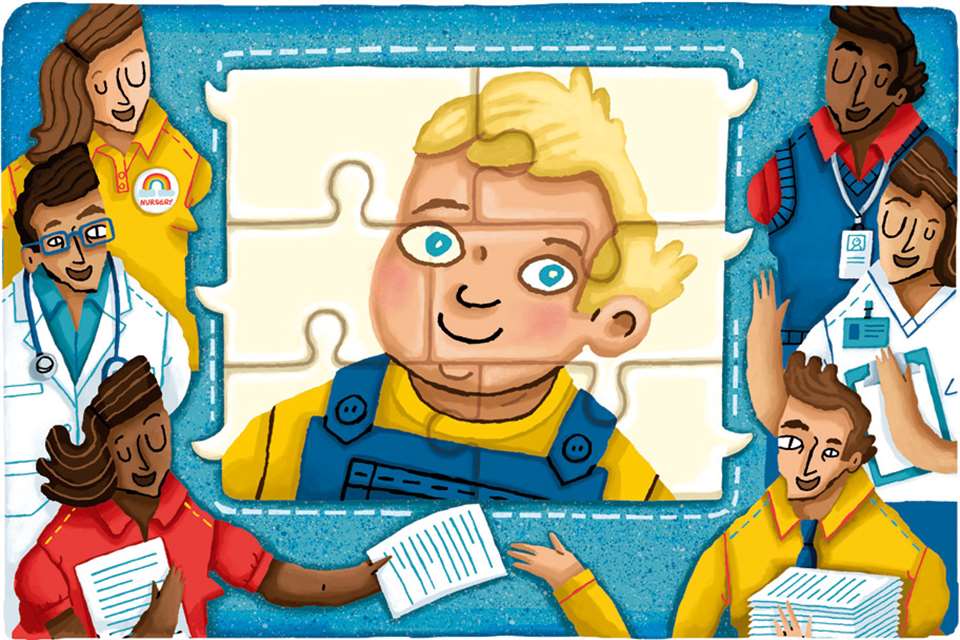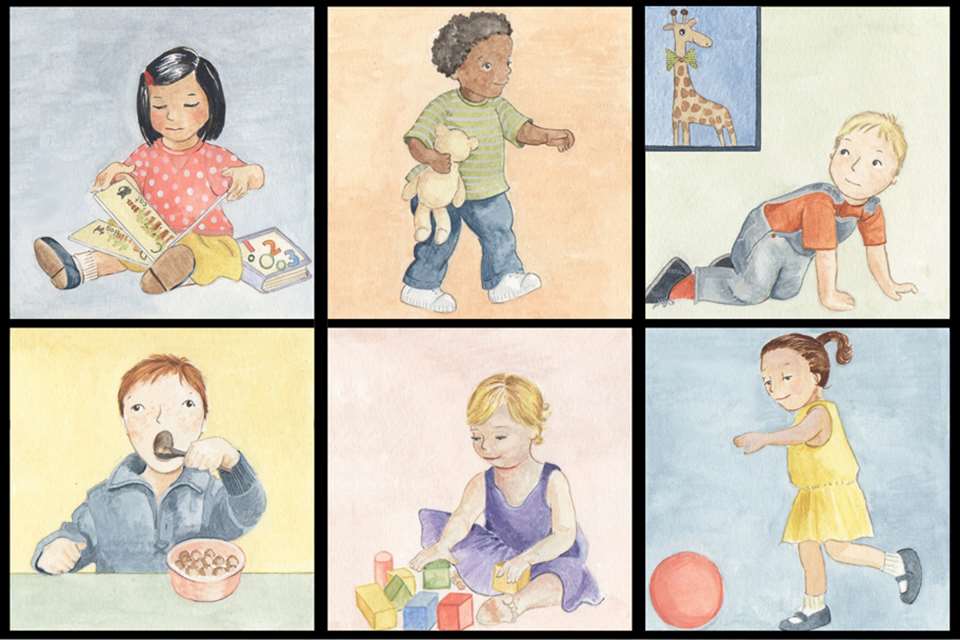Multi-Agency Working: Part 2 - It’s good to share
Monday, February 22, 2016
Information-sharing between organisations is at the core of multi-agency working. In the second instalment of this series, Hannah Crown looks at the issues than can arise among practitioners

Individual agencies struggled with information sharing long before the focus on multi-agency working made them turn outwards. According to Jean Gross, co-author of the Information Sharing In The Foundation Years report, ‘Anyone who has been involved in the health system will know that doctors sometimes don’t pass information to each other. A local authority commissions both children’s centre workers and social workers and sometimes they don’t share information.’
Aside from this, according to Ms Gross, the early years/health practitioner dynamic can be unequal. ‘Health professionals feel they can’t pass on information to early years,’ she says, while early years practitioners are often happy to pass information on to health practitioners but ‘don’t know they need to ask for parents’ consent first’.
Yet parents are surprised to find that information is often not shared. According to the report, parents wanted ‘an appropriate level of information shared with their consent, in a timely, efficient manner in order to better deliver the support services that they need…In fact, this is what the majority of parents assume is already happening; they are surprised and often shocked to find that it is not.’
What are the rules?
Information-sharing between agencies is needed in many routine circumstances: in integrated reviews, for example. It is also needed in not so routine situations: concerns that a child may be being abused, for example. The Common Assessment Framework is completed with parents’ consent. In the case of the integrated review, the rules are more complex. A spokesman for the Department of Health says that, because an integrated review brings together two existing reviews, the Healthy Child Programme (HCP) health and development review and the Early Years Progress Check, ‘the consent arrangements for those two reviews apply to the integrated review’. The HCP review is offered to parents who consent if they choose to take up the offer. Conversely, the Early Years Progress Check is a legal requirement, and so the resulting summary must be produced even without parents’ consent.
The EYFS framework states that, ‘When a child is aged between two and three, practitioners must review their progress, and provide parents and/or carers with a short written summary of their child’s development in the prime areas.’ But early years providers must have the consent of parents and/or carers to then share this information with other relevant professionals.
The information is added to the child’s red book, ‘a parent-held record, so parents choose when and how to share the information that is contained in their copy’.
Information from the red book should thus be shared ‘with informed consent where appropriate and, where possible, respect the wishes of those who do not consent to share confidential information. Practitioners may still share information without consent, if in their judgement there is good reason to do so, such as where safety may be at risk’, the DoH spokesman adds. Informed consent means the person making the decision must be presented with all of the facts on which to make their decision.
On the latter point of sharing without consent, it can be helpful to look to councils such as Essex County Council, which have devised their own information-sharing protocols. The Essex protocol also says that practitioners have to be mindful of several laws, including the Data Protection Act, when sharing information. Its guidance says the Act is complied with as long as either the individual has given consent, or that information-sharing is necessary to protect the vital interests of the individual. Where sensitive information is involved, the sharing has to either be with ‘explicit consent’ or to ‘protect the vital interests of the data subject or another person’.
It also says organisations that have signed up to its information-sharing protocol ‘agree that disclosure without consent is lawful if there is a risk of harm to the child’.
Trust issues
As well as the potential for confusion over consent, many studies on inter-agency working cite a lack of trust between practitioners as a major hurdle. The National Children’s Bureau, which did a pilot of the integrated review, has said that where early years professionals have trusted relationships with health professionals, and a clear understanding of relative roles, information sharing is seen as less of a problem, but the degree to which these relationships exists ‘varies considerably’. The qualitative nature of some of the data to be shared also doesn’t help. Expert Jan Georgeson has suggested that early years practitioners do find it hard to share information. In her study, Two-Year-Olds in England, 55 per cent of managers thought their staff were just ‘average’ at inter-professional working, while 9 per cent said they were ‘low’.
For Gross, the crux of the issue is that ‘if a health professional shares information, and there is a problem, even if their manager said they could do it, they could be struck off. They belong to professional bodies and a massive part of their training is about keeping information confidential. It is easy to criticise that but we have to understand it is there.’ Part of the reluctance from health teams, she says, is due to a perception that ‘there are times when early years professionals live in communities where they work and would be happy to chat about the families they work with in the staff room. The health professional may think that is not appropriate.’
For Louise Mullins, health visiting lecturer at City University London, availability of early years practitioners generally (aside from the integrated review) is more of a concern for her. ‘They are often not free to come to meetings because of the ratios – they can’t be released. Sometimes they will send a report through but their presence would be really useful. If you meet, then trust builds,’ she adds. Ms Mullins, who was involved in setting up the ages and stages questionnaire training for the integrated review as a manager at Whittington Health, adds that a child being at nursery was often a positive sign. ‘If you know a child is in an early years setting, whatever is going on with the family, you breathe a sigh of relief because you know someone is keeping an eye on the child. Early years will know the child better than we do.’
Greater understanding
Di Skirving, clinical lead of a health visiting team in Middlesbrough, agrees that ‘one of the biggest problems we have is the lack of understanding of each other’s roles’, and says contact from early years can be ‘hit and miss – some nurseries would contact the health visiting team with concerns about children, but others wouldn’t’.
But, she says, the integrated review, where both early years staff and health visitors share information on children’s development in five core areas (including PSE, communication and language and physical health), has helped foster links.
Ms Skirving is currently working directly with a children’s centre manager to devise a school-readiness programme aimed at providing targeted interventions to parents with issues in areas such as attachment, communication and bonding. She says the project has helped provide a broader perspective. ‘From a health point of view,’ she explains, ‘we need to re-evaluate how we do things, so that from first contact with parents we will share with early years so that opportunities aren’t missed. At the moment we are trying to put together a contact form that meets the needs of health, early years settings and children’s centres and can be used from when a baby is born. Having the same consent procedures between health and children’s centres would be beneficial to all.’
However, until this happens, one thing that would help from early years, Ms Skirving says, is one set of consistent forms for processes emanating from early years. ‘Sometimes they change a lot and health staff get confused about what they need to put on them. Also, knowing whom to contact [due to staff turnover] – it does become a problem.’
KEY POINTS FROM GOVERNMENT GUIDANCE ON ‘INFORMATION SHARING’, PUBLISHED IN MARCH 2015
• The Data Protection Act 1998 and human rights law are not barriers to justified information sharing, but provide a framework for appropriate information sharing.
• Be open and honest with the individual/family from the outset about why, what, how and with whom information will, or could, be shared – and seek their agreement, unless it is unsafe or inappropriate to do so.
• Share with informed consent where appropriate and, where possible, respect the wishes of those who do not consent to share confidential information. You may still share information without consent if, in your judgement, there is good reason for it.
• Keep a record of your decision. If you decide to share, then record what you have shared, with whom and for what purpose.
FURTHER INFORMATION
• Nursery World article, www.nurseryworld.co.uk/nursery-world/feature/1152023/training-today-continuing-professional-development-up-for-review
• Information sharing tool, www.rcpch.ac.uk/informationsharingmatters








